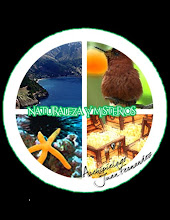En 1741, el corsario inglés Lord Jorge Anson, con su escuadra se dirigió al Pacífico Sur, llegando tiempo después, con sólo tres naves y una disminuída tripulación al Archipiélago de Juan Fernández. En esta oportunidad bautizó a la bahía del poblado como Cumberland (Tierra de la Obstrucción). Luego de recuperarse se dispuso a atacar a las costas del Pacífico sin retornar a Cumberland. Investigaciones históricas indican que uno de los tesoros que se encuentran en los fondos subterráneos de esta isla podría haber sido enterrado por el mítico corsario inglés.
Los españoles decidieron fortificar la isla, fundando en 1750 el actual poblado de San Juan Bautista, el que se transformó en un presidio. La población civil, a causa de los desastres naturales y los crímenes cometidos por los delincuentes y las numerosas rebeliones, emigra al continente sucediéndose una serie de fundaciones y refundaciones de esta conflictiva colonia.
Por muchos años, los piratas fueron parte importante de la historia ambiental de la isla, ya que terminaban en las costas de Juan Fernández para reponer las fuerzas perdidas en sus hazañas, sin embargo, los españoles pusieron punto final a esta tradición corsaria.
Por esto, existe la posibilidad de que en la isla esté escondido un tesoro de cerca de 800 toneladas de oro y plata. Este hallazgo se habría realizado luego de que una expedición chilena encontrará, a través de un robot, el lugar exacto donde estaría enterrado.
Los españoles decidieron fortificar la isla, fundando en 1750 el actual poblado de San Juan Bautista, el que se transformó en un presidio. La población civil, a causa de los desastres naturales y los crímenes cometidos por los delincuentes y las numerosas rebeliones, emigra al continente sucediéndose una serie de fundaciones y refundaciones de esta conflictiva colonia.
Por muchos años, los piratas fueron parte importante de la historia ambiental de la isla, ya que terminaban en las costas de Juan Fernández para reponer las fuerzas perdidas en sus hazañas, sin embargo, los españoles pusieron punto final a esta tradición corsaria.
Por esto, existe la posibilidad de que en la isla esté escondido un tesoro de cerca de 800 toneladas de oro y plata. Este hallazgo se habría realizado luego de que una expedición chilena encontrará, a través de un robot, el lugar exacto donde estaría enterrado.

In 1741, the English privateer Lord George Anson, with his squad went to the South Pacific, arriving later, with only three ships and a crew decreased to Juan Fernandez archipelago. This time he named the bay from the village as Cumberland (Obstruction of the Earth). After recovering were available to attack the Pacific coast without returning to Cumberland. Historical research indicates that one of the treasures that are found in the deep underground of this island might have been buried by the legendary English privateer. The Spaniards decided to fortify the island, founded in 1750 the current town of San Juan Bautista, which was transformed into a fortress. The civilian population due to natural disasters and crimes committed by criminals and the numerous uprisings, migrate to the continent followed a series of foundations and merged this troubled colony. For many years, the pirates were an important part of the environmental history of the island, as it ended up on the shores of Juan Fernandez to replace forces lost in their feats, however, the Spaniards put an end to this tradition pirate. For this, there is a possibility that the island is a hidden treasure of some 800 tons of gold and silver. This finding would be made after an expedition Chilean find, through a robot, the exact location where it would be buried.






+(318+x+412).jpg)